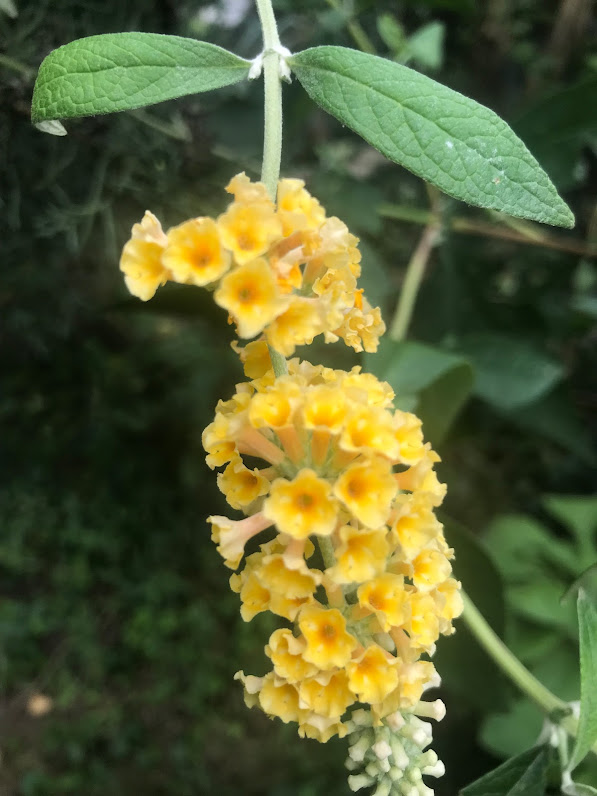Bogturtle's Garden- Sept 2023
Probably the same raccoons every night, and one must sleep in the barn, as I hear noises way back in the rafters, where I can't see. And one seems to come from there, as I check out the cameras. This one is just eating scraps of food we throw out, but somebody could make up something he or she is saying. They were only, ever, a problem way back when we kept chickens. They would invade the henhouse and eat the eggs. Now they are just entertainment.
Taken with my phone, so not terribly sharp. Many blooms continue on Buddlea weyeriana 'Honeycomb'. Of all the Buddleas planted, over many years, only this is here, and was reordered and replanted about 3 years ago. Supposed to be so weedy they are illegal in some States.
A little orange Morning Glory bloomed. Flowers are only half an inch wide. As with most flowers, in time, by selection, size might be improved. Found out 'Orange Noah' may be Ipomea coccinea, a native species. It had grown, last summer, in the planter nearby, and I did not save the seed, to my knowledge. So it is a pleasant surprise and may form seed to be saved before frost comes. I did recognize that the leaves were slightly different, when I saw it growing where seed had, somehow, dropped.
Cornus officianalis
Some gardeners are familiar with the Cornelian Cherry, Cornus mas, and it was even grown by Thomas Jefferson at Montecello. Apparently a food item in the Caucasus Mts of Europe. You would need a lot of sugar or honey, to make the inch long fruit palatable. But far fewer know about this Japanese species, Cornus officianalis. Every Spring I show this species blooming about two weeks earlier than Cornus mas.
This is a Gray Fox. Have not seen a red one in over a year. Grays are more catlike and can climb trees.
Grown from seed, these Woodland Strawberries are distinct from the commonly sold sorts. Fragaria vesca may be the most proper name. Much tinier, but still flavorfull, not giving runners, and blooming and bearing all Summer. And I have had good crops of berries that are, on different plants, red, white or yellow.
Not this Summer, while neatly mulched with shredded material and surrounded by lawn clippings. No explanation, but I might fence them in, next Summer. We do have a Groundhog, Rabbits and Voles, so maybe they are well fed and happy.
Taken with my phone. A 10 step process to get to showing it in Blogger. Ilex verticellata, I think. And possible 'Red Sprite'. Grown only for these spectacular berries, only on the female plants. All Ilex or Hollies seem to have separate sexes and a male plant definitely makes for more berries on the female plants. I have one male pollinating many females, here, and the blooming must coincide by date, for pollination to succeed. A chart is available that matches female sort to male in bloom time, as many clones are in cultivation. All the small wasps, flies and bees move pollen from male plants to female, and the closer the two sexes are, the better the transfer seems to be. I don't expect the berries to remain long after this species loses its leaves for Winter. The birds make short work of them here. Something gardeners should consider, anticipating the beautiful display that should come. I am unsure how the Longwood Gardens keeps their magnificent display from being taken by birds. But my shrubs do look good now.









I have never seen an orange morning glory. How pretty.
ReplyDeleteReally little flowers, but I will continue to grow it if I can. I do DuckDuck go, and google things in, and then ask for images. Amazing what comes up. Lots of photos of Orange Noah and others.
Delete